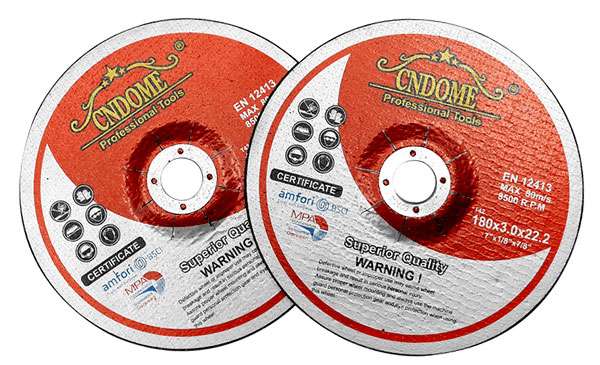Cutting discs are essential tools in various industries, from construction to metalworking. They come in different sizes and thicknesses to cater to a wide range of cutting needs. Among these, the 180mm cutting disc is a popular choice due to its versatility and efficiency. In this blog post, we will delve into the different thicknesses of 180mm cutting discs, their applications, and how to choose the right one for your needs.
The Importance of Thickness in Cutting Discs
The thickness of a cutting disc significantly impacts its performance, including the cutting speed, precision, and lifespan. Thinner discs generally cut faster and produce less heat, while thicker discs offer more durability and stability during heavy-duty cutting tasks.
Common Thicknesses of 180mm Cutting Discs
1. 1.0mm to 1.6mm:
- Applications: These thin discs are ideal for precise and clean cuts in metal sheets, pipes, and profiles. They are commonly used in automotive and sheet metal industries.
- Advantages: High cutting speed, minimal material wastage, and reduced heat generation.
- Disadvantages: Less durable, more prone to breakage, and not suitable for thick or hard materials.
2. 2.0mm to 2.5mm:
- Applications: Suitable for general-purpose cutting tasks, including metal, stainless steel, and some non-metallic materials like plastics.
- Advantages: Balanced performance with good cutting speed and reasonable durability. They offer more stability than thinner discs.
- Disadvantages: Slightly slower cutting speed compared to thinner discs, and they generate more heat.
3. 3.0mm to 3.5mm:
- Applications: Designed for heavier tasks such as cutting thick metal bars, rods, and structural steel. They are also used in demolition and construction work.
- Advantages: High durability, better stability, and longer lifespan. They can withstand tougher cutting conditions without breaking easily.
- Disadvantages: Slower cutting speed, more material wastage, and higher heat generation.
Choosing the Right Thickness
Selecting the right thickness for your 180mm cutting disc depends on the specific requirements of your project. Here are some factors to consider:
- Material Type: Softer and thinner materials can be cut efficiently with thinner discs, while thicker and harder materials require thicker discs for durability and stability.
- Cutting Speed vs. Durability: If you need fast, precise cuts, opt for a thinner disc. For tasks that require robustness and can afford a slower speed, thicker discs are more suitable.
- Tool Compatibility: Ensure that the thickness of the disc is compatible with your cutting tool. Some tools may have limitations on the disc thickness they can accommodate.
Safety Considerations
Regardless of the thickness, always prioritize safety when using cutting discs:
- Wear Protective Gear: Use safety goggles, gloves, and hearing protection to safeguard against flying debris and noise.
- Check for Damage: Inspect discs for cracks or damage before use to prevent accidents.
- Follow Manufacturer Guidelines: Adhere to the recommended operating speeds and usage instructions.
Conclusion
Understanding the different thicknesses of 180mm cutting discs and their specific applications can help you make informed decisions for your cutting tasks. Whether you need speed and precision or durability and stability, there is a disc thickness that fits your requirements. Always consider the material, cutting speed, tool compatibility, and safety to achieve the best results in your projects.
By choosing the right cutting disc thickness, you can enhance efficiency, productivity, and safety in your cutting operations.



